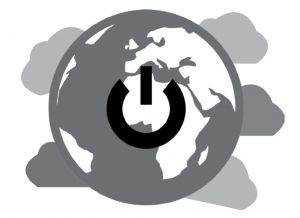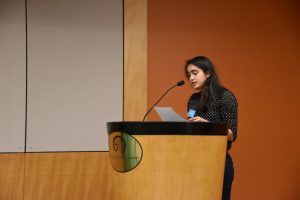Global Reset: The new normal
Climate change increases the size and frequency of natural disasters
September 3, 2018
17 fires are actively burning across California as of Aug. 28. The Mendocino Complex fire, the largest ever in Californian history, continues to spread in the Ranch portion and is now 93 percent contained. With three injuries and one fatality confirmed so far, and smoke covering all of California and reaching as far as parts of Canada and Montana according to NASA, the blaze affects much more than the immediate fire perimeter.
The Carr fire, the seventh largest in state history, is 97 percent contained after a month of containment efforts. Eight lives have been claimed, and three firefighters were injured as the fire continues to burn across the scorched California landscape. The Carr fire, a result of vehicle failure, is one of the many natural disasters that are man-made. According to 2017 research conducted by the Earth Lab at University of Colorado, Boulder, 84 percent of wildfires from 1992 to 2012 have been started by humans.
With this increasing frequency of such disasters, a new question is posed: is this the new normal?
Though scientists cannot fully attribute such natural disasters to climate change, research has linked human-caused rising temperatures to the increasing frequency and size of these events. The destruction also increases as more and more people are moving to disaster-prone areas as the population continues to grow.
“As temperature rises, more intense heat waves dry out the soil and make the drought worse, and in combination with that, … invasive bark beetles kill more trees, which provide more fuel for fires,” said Diana Moss, advisor of Green Team. “When you have these high temperatures and big heat waves, you get these firestorms, or fire tornadoes, which are really intense.”
With these tragedies surrounding us, it’s difficult to look beyond the short-term and seek solutions. However, giving up hope is just as harmful as allowing humankind’s current abuse of the environment to continue.
“I think that the message is not to feel like this a problem that we can’t solve, or that we’ve already messed everything up and so why bother. The message is just that there is urgency,” upper school biology teacher Dr. Katherine Schafer said. “The thing that drives me at this point is the desire to prevent the human suffering that is coming if we don’t act – the human suffering for people around today, but even more seriously, people that are yet unborn, that can’t fight for themselves, but that are going to be born to a diminished planet if we don’t really get our act together.”
Often, long-term government action in combating climate change is difficult to achieve due to the frequency of elections as well as the fluctuation of political ideals. President Trump’s backing out of the Paris Climate Accord is just one example.
“There’s a really big disconnect in time with the kind of problem that we’re trying to ask them [politicians] to solve and their incentives, which are to pay attention to the short term, to get re-elected tomorrow, or next year,” Dr. Sarah Anderson, Associate Professor of Environmental Politics at the University of California, Santa Barbara, said.
Significant change starts with the people. Rather than latching on to the dread caused by the status quo, take action and make an impact on the fight for the environment. In addition to decreasing the size of one’s carbon footprint, rallying for government legislation also provides an opportunity to ensure a better future for our planet.
“Most of [the change] will probably come not from professors like me but from people on the ground who work in government agencies, from people who are just community members,” Dr. Anderson said. “I think there are a ton of opportunities to be thinking about the best way to harness what is a really terrible experience, a disaster, and turn it into something that gives us the ability to be resilient to a disaster next time.”
Taking such action is simple: citizens can contact local assembly members to call for their support on Senate Bill 100, which will have California on 100 percent clean energy by 2045. Additionally, the People’s Climate Movement will hold a Climate March on Sep. 8 to demonstrate the urgent need for change.
Creating more discourse on climate change does not need to simply be over the phone to assembly members or isolated in annual marches. Casual conversation is just as important in spreading awareness and the sense of urgency needed to provide a better future for all.
“We have the technology, we have the ability to create a society that’s way better than what we have right now. We need to figure out a way to get there. If we see that endpoint, … this is going to be better for all of us,” Dr. Schafer said. “All of us have the ability to dream of a better life.”
This piece was originally published in the pages of The Winged Post on Aug. 31, 2018.




![LALC Vice President of External Affairs Raeanne Li (11) explains the International Phonetic Alphabet to attendees. "We decided to have more fun topics this year instead of just talking about the same things every year so our older members can also [enjoy],” Raeanne said.](https://harkeraquila.com/wp-content/uploads/2025/10/DSC_4627-1200x795.jpg)


















![“[Building nerf blasters] became this outlet of creativity for me that hasn't been matched by anything else. The process [of] making a build complete to your desire is such a painstakingly difficult process, but I've had to learn from [the skills needed from] soldering to proper painting. There's so many different options for everything, if you think about it, it exists. The best part is [that] if it doesn't exist, you can build it yourself," Ishaan Parate said.](https://harkeraquila.com/wp-content/uploads/2022/08/DSC_8149-900x604.jpg)




![“When I came into high school, I was ready to be a follower. But DECA was a game changer for me. It helped me overcome my fear of public speaking, and it's played such a major role in who I've become today. To be able to successfully lead a chapter of 150 students, an officer team and be one of the upperclassmen I once really admired is something I'm [really] proud of,” Anvitha Tummala ('21) said.](https://harkeraquila.com/wp-content/uploads/2021/07/Screen-Shot-2021-07-25-at-9.50.05-AM-900x594.png)







![“I think getting up in the morning and having a sense of purpose [is exciting]. I think without a certain amount of drive, life is kind of obsolete and mundane, and I think having that every single day is what makes each day unique and kind of makes life exciting,” Neymika Jain (12) said.](https://harkeraquila.com/wp-content/uploads/2017/06/Screen-Shot-2017-06-03-at-4.54.16-PM.png)








![“My slogan is ‘slow feet, don’t eat, and I’m hungry.’ You need to run fast to get where you are–you aren't going to get those championships if you aren't fast,” Angel Cervantes (12) said. “I want to do well in school on my tests and in track and win championships for my team. I live by that, [and] I can do that anywhere: in the classroom or on the field.”](https://harkeraquila.com/wp-content/uploads/2018/06/DSC5146-900x601.jpg)
![“[Volleyball has] taught me how to fall correctly, and another thing it taught is that you don’t have to be the best at something to be good at it. If you just hit the ball in a smart way, then it still scores points and you’re good at it. You could be a background player and still make a much bigger impact on the team than you would think,” Anya Gert (’20) said.](https://harkeraquila.com/wp-content/uploads/2020/06/AnnaGert_JinTuan_HoHPhotoEdited-600x900.jpeg)

![“I'm not nearly there yet, but [my confidence has] definitely been getting better since I was pretty shy and timid coming into Harker my freshman year. I know that there's a lot of people that are really confident in what they do, and I really admire them. Everyone's so driven and that has really pushed me to kind of try to find my own place in high school and be more confident,” Alyssa Huang (’20) said.](https://harkeraquila.com/wp-content/uploads/2020/06/AlyssaHuang_EmilyChen_HoHPhoto-900x749.jpeg)














